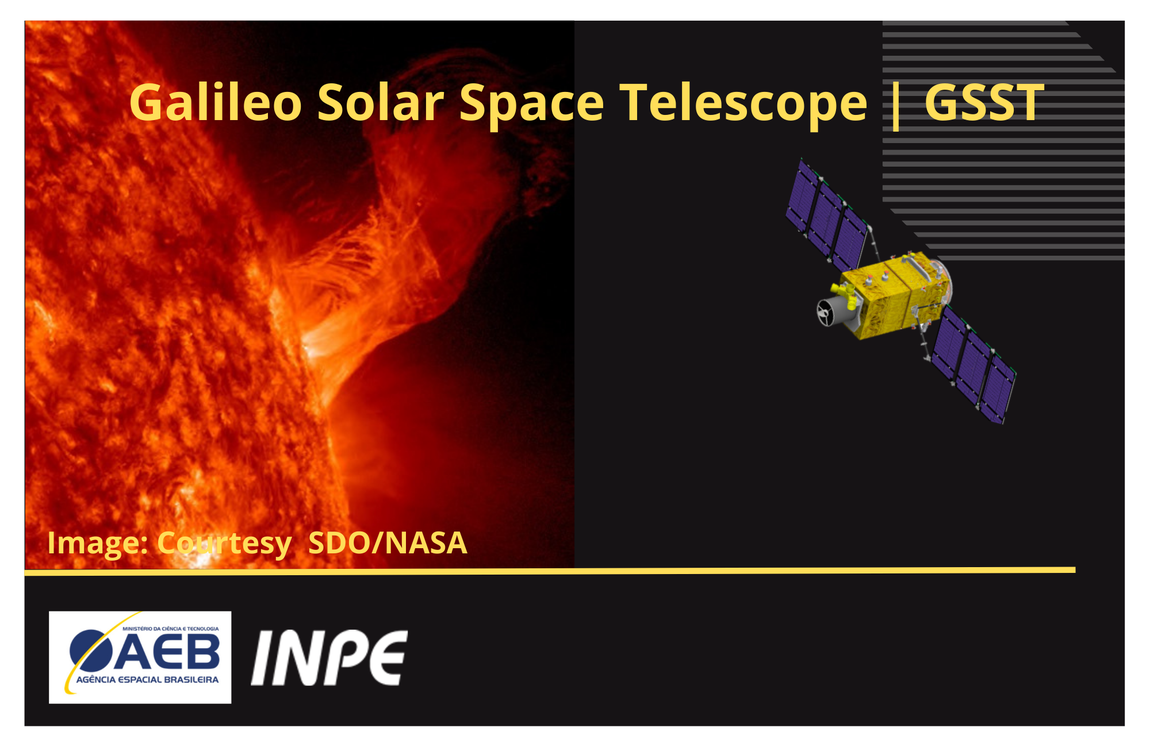Galileo Solar Space Telescope Mission
Overview
The Galileo Solar Space Telescope (GSST) is a spacecraft mission to provide accurate measurements of the magnetic field and its evolution from the solar surface through the outer layers of the solar atmosphere as part of the international efforts to understand the evolution of the heliosphere and its influences on the Earth.
The underlying basic science questions to be addressed by the GSST mission are:
- What are the fundamental physical/plasma processes at work in the Sun?
- How does the solar dynamo work?
- What are the relative contributions of different physical processes that lead to the heating of the outer layers of the solar atmosphere (chromosphere to corona)?
- What effect does the variable solar magnetic field structure have on the evolution of the Earth's highly-coupled atmosphere-ocean system?
- What are the responses of the magnetic fields and energetic particles in the vicinity of the Earth due to different solar wind structures?
To help address these open scientific questions, the proposed Galileo Solar Space Telescope mission will perform solar observations in high spatial and temporal resolution to characterize the evolution of the magnetic structure of the photosphere, chromosphere, and its modulation of the transition region and corona, and its impact on the heliosphere out to the Earth. Specifically, the mission has three main objectives: (1) Understand the evolution of the magnetic structure of the Sun; (2) Improve understanding of the Sun's influence on Earth's climate; and, (3) Determine the Sun's impact on geospace.
Workshop activities will be organized around these objectives via three working groups: solar physics; Sun-climate interactions; and solar wind-magnetosphere physics.
The INPE's Space Missions Integrated Design Center (CPRIME) completed the GSST mission concept study in December 2017. The outcomes of this study were a conceptual system to meet the objectives of the mission, comprising ground and space segments, as well as a first assessment of the development time, risks, and costs associated with the proposed solutions. The optical imaging payload architecture, the satellite orbit, and the available ground stations to receive scientific data from the satellite were the primary identified discriminators for the mission, driving satellite pointing accuracy, payload pointing stability, and a high rate of scientific data acquisition.
The payload to measure the magnetic field structure of the solar atmosphere is based on spectropolarimetry and will consist of three telescopes. One provides high-resolution imaging in the visible and ultraviolet, while the other two provide full-disk imaging in those spectral regions. An analysis taking into account different solutions for onboard data storage, availability of ground stations, and data transmission from the satellite suggests that either low-Earth or geostationary orbits provide feasible options. To access a feasibility study based on a strawman payload and mission design, click here:
Download Mission Study Report
